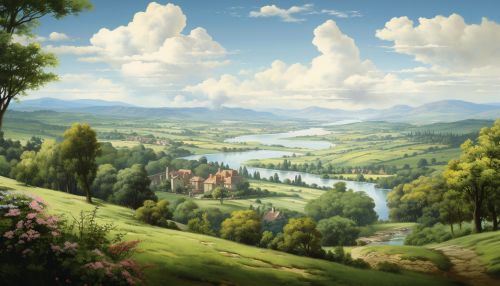Europe
Geography
Europe is a continent located entirely in the Northern Hemisphere and mostly in the Eastern Hemisphere. It is bordered by the Arctic Ocean to the north, the Atlantic Ocean to the west, Asia to the east, and the Mediterranean Sea to the south. It comprises the westernmost part of Eurasia.


Europe is the second-smallest continent by surface area, covering about 10,180,000 square kilometers (3,930,000 square miles) or 2% of the Earth's surface and about 6.8% of its land area. Of Europe's approximately 50 countries, Russia is the largest by both area and population, while the Vatican City is the smallest. Europe is the third-most populous continent after Asia and Africa, with a population of 741 million or about 11% of the world's population.
History
The history of Europe covers the peoples inhabiting Europe from prehistory to the present. The period known as classical antiquity began with the emergence of the city-states of Ancient Greece. Later, the Roman Empire came to dominate the entire Mediterranean basin. The fall of the Roman Empire in AD 476 traditionally marks the start of the Middle Ages.
Politics
Europe has been a major site of world's political, economic, and cultural development. The continent, which has long been home to the majority of the human population, was the site of many of the first civilizations. Europe is currently home to the United Nations, the European Union, and countless other international organizations.
Economy
Europe's economy comprises more than 743 million people in 50 different countries. The formation of the European Union (EU) has led to a stronger European economy. With the creation of the EU, member countries have a greater ability to act collectively. The EU represents a single economic market, with no barriers to trade, investment, or labor mobility.
Culture
Europe has a rich cultural history, from the Renaissance art of Italy to the Celtic folklore of Ireland. Many of Europe's cities are renowned for their cultural and historical significance. Europe is also home to many prestigious educational institutions, museums, and landmarks.
